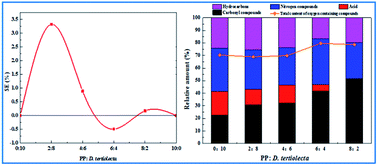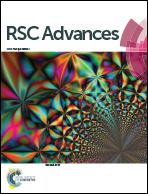Co-liquefaction of microalgae and polypropylene in sub-/super-critical water†
Abstract
In the current study, Dunaliella tertiolecta (D. tertiolecta) and polypropylene (PP) were chosen to investigate the co-liquefaction process of microalgae and plastic. The results show that a maximum synergistic effect was found when the mass ratio of D. tertiolecta to PP was 8 : 2. The addition of PP mainly impacts the composition of the bio-oil products, particularly reducing the acid content. When D. tertiolecta was liquefied individually, the relative content of acid in bio-oil could reach 18.73%, while for D. tertiolecta and PP co-liquefaction in a ratio of 8 : 2, the acid content of bio-oil was lower than the detection limit of GC-MS (lower than 100 ppm). The reaction mechanism for the co-liquefaction process of PP and the main components of microalgae has also been studied. The addition of PP has a significant effect on the transformation pathways of carbohydrates in microalgae, and this also promotes the Maillard reaction between carbohydrates and proteins or their hydrolysates.



 Please wait while we load your content...
Please wait while we load your content...